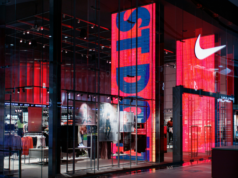High-quality, optimized images on your website are crucial for building trust and credibility with your audience. Not only do visuals help retain information and make it easier for your audience to recall your brand, but they also play a crucial role in the conversion process.
People are much more likely to purchase a brand they are familiar with and trust. Using optimized images is an effective way to establish this trust and build a strong relationship with your audience.
This article explores the techniques that will help you create positive experiences for potential customers through image optimization. Let’s check out these tips from a St. Pete SEO company so that you can start optimizing product images and increasing traffic to your site.
Image Optimization Tips
Optimizing images for both mobile and web improves the browsing experience and drives customer acquisition. If your website is optimized for Google Image searches, it will take advantage of a valuable opportunity to increase traffic, generate more sales, and expand your brand’s reach.
Here are some techniques for using Google images to optimize your e-commerce website:
1. Learn the SEO basics for images
Optimizing your images improves their chances of being matched with relevant search queries by Google, similar to how web pages are optimized for traditional search results. Google considers the authority of the page or website and the image’s relevance to the search keywords when displaying images in search results.
Images on product pages are more likely to rank higher than those on category pages because they are more specific to the search terms being searched.

To optimize your images, consider using the following tips:
- Name image files: Naming image files will make them more easily identifiable for users and search engines. For example, instead of using a default filename like IMG-01234.jpg for an image of a waving American flag, give the image a name like waving-American-flag.jpg to make it clear what the image is and improve the chances of it being matched with relevant search queries.
- Add descriptive alt text: Alt text helps users understand the purpose of an image, especially visually impaired users who use screen readers.
- Include captions: Using captions is a great way to provide context for an image and engage with readers. Captions also offer additional opportunities for adding relevant keywords, which can help with SEO.
- Implement schema markup or structured data: Implementing schema markup, or structured data can help search engines better understand the content and elements of your website. For e-commerce websites, it is vital to use schema markup for product information, such as the product name, description, and price, to help Google pull that specific information into the search results.
- Ensure your images are responsive: Ensure that your website and images can adjust to different screen sizes. Google considers responsiveness a ranking factor, and it also improves the user experience for those who primarily use their mobile devices.
- Create an image sitemap: Creating an image sitemap is a helpful way to help Google find images on your site more quickly. An image sitemap is an extension of your XML sitemap and is particularly useful in today’s world, where websites use more JavaScript. It helps Google understand the images on your site and improve the chances of them appearing in search results.
- Examine the content surrounding the image: Ensure that the content surrounding the image is closely related to it. This will help Google understand the context of the image and place it in relevant search results. The text around the image should be relevant and provide context to the image, which is a way to help Google understand the image’s purpose and match it with relevant search queries.
2. Maximize User-Generated Content

User-generated content (UGC) is a powerful tool for building trust and increasing conversions. UGC lets customers see how others use your product and gain insight from their reviews. Encourage customers to upload photos of themselves using your product on platforms such as Facebook and Instagram.
Then, repurpose this content on your product and checkout pages to build trust and convert visitors into customers. This not only improves customer engagement but also provides social proof, which is a powerful marketing tool.
3. Include product info in Google Images and Google Search
E-commerce images should include accurate information about the products. This information should be easily accessible through Google Search and Google Images.
Utilizing Google’s recent updates to product feeds, you can ensure that your product information is up-to-date and relevant to buyer’s search queries. The ranking of your product information, such as images, is determined by its relevance to the user’s search queries.
4. Compress images
Large images take longer to load and can slow down your site’s performance. Using tools like Tiny PNG, you can compress images without sacrificing quality. This will help to improve the loading speed of your pages and increase the chances of your images being indexed by Google Images.
Additionally, using a CDN (Content Delivery Network) can further enhance the delivery speed of your images. This will improve the overall user experience and increase the chances of attracting and retaining customers.
Key Takeaway
Optimizing your images for an e-commerce website optimization is an essential step in attracting and retaining customers. By reducing file sizes, using relevant and descriptive file names, providing alt text, and implementing responsive design, you can improve the user experience and increase search engine rankings.
Additionally, utilizing techniques like schema markup and creating image sitemaps can boost your visibility on Google Images. Partnering with a digital marketing agency can provide expert guidance on using Google images to drive traffic and increase conversions. Don’t miss the opportunity to stand out with high-quality, optimized images.









